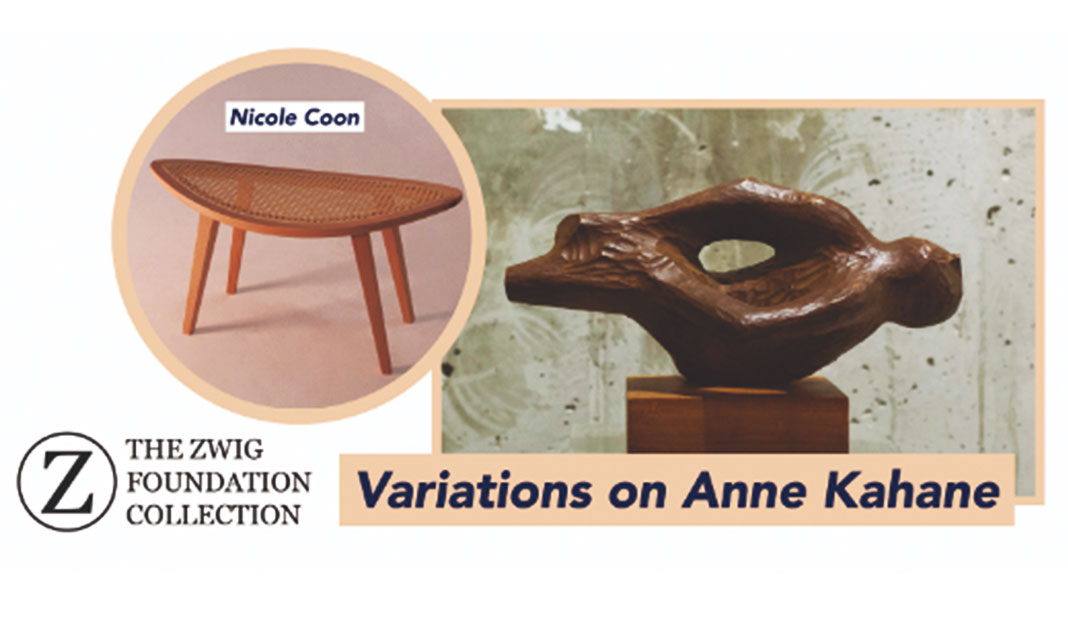Variations On is a series of artist interviews surrounding The Zwig Foundation Collection, a gallery featuring late Toronto residents Helen and Walter Zwig’s lifelong collection of art from around the world. Variations on Anne Kahane is the first of the planned series of interviews, with Toronto based artist Nicole Coon taking the stage to discuss her own work and that of sculptor Anne Kahane.
Coon, a contemporary furniture designer herself, is interested in the ways in which furniture can make us think and feel, remarking during her interview “I look at furniture as a means to explore ideas, processes, and cultural references.” Having earned her B.A. in art history at McGill, and currently studying at Sheridan, Coon’s work is also largely informed by art theory. The inspirations for her piece “cabinet of one colour,” for example, range from Bauhaus colour theorist Paul Klee to 18th century philosopher Goethe.
Included in these muses is fellow Canadian-based artist Anne Kahane, whose fascination with the wood medium likewise fascinated Coon during her studies. Kahane, best known for her series of mahogany figures produced in the 50’s and 60’s, often described her medium of choice as a kind of supple wood, that was easy to carve like clay. Such ease of use, noted Coon, helped “maintain the intimacy between the sculptor, concept, and the final piece,” a constant priority of Kahane’s, who found the more rigorously modelled and casted sculptures of her time to be superficial.
Later in her career, Kahane would go so far as to say, “I often consider myself as a sort of carpenter who makes sculpture,” finding that for her artistic concepts to function, she must first “adapt [them] to work in wood.” Fortunately, reflected Coon, Kahane’s chosen material of wood, which evokes nature, roughness, and growth, would serve as the perfect canvas for Kahane’s focus: the human form and condition.
In her series of figural sculptures “Broken Man,” “Falling Man,” and “Horizontal Figure,” Kahane presents the figures as flawed, struggling, and helpless, qualities reflected in their wooden form. The pieces are, for example, unpolished, leaving them literally flawed and, said Kahane, giving them “a quality of breathing and scintillating.”
With regards to “Horizontal Figure,” a piece of Kahane’s work currently housed at The Zwig Foundation Collection, Coon noted the many marks covering the sculpture, as a result of Kahane’s method of carving using a gouge, which left the unfinished wood form forever injured. The piece’s position, depicting a human lying horizontal, is unique among many human sculptures and adds to the feeling of helplessness. The melding of arms into legs, the surrendering upwards gaze of the body, and its asymmetry, added Coon, likewise contributed to Kahane’s thesis of pain as part of the human condition.
For Coon, a young and emerging artist, Kahane’s dedication to specific forms, materials, and her thesis is admirable. The success of her own work, said Coon, “is determined by how successfully … I’ve reduced it to form and those ideas.” Coon admits, however, that the structured variations in the themes, materials, and forms of her work—mandated by her studies at Sheridan—has been a welcome opportunity to explore new ideas. While Coon is, for now, unsure of the thesis presented by her own body of work, she continues to pursue furniture projects which “fill some gap that wasn’t there” in viewers’ conception of the home.



